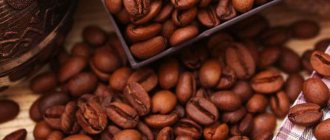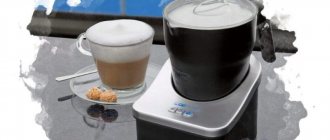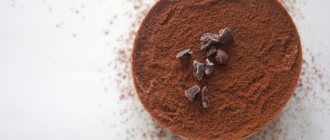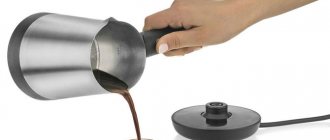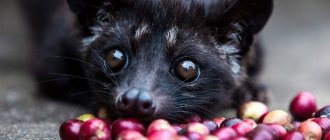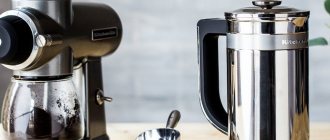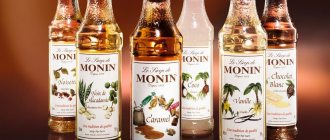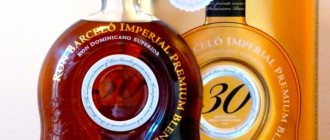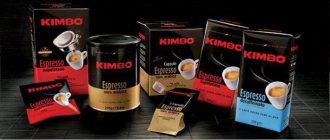Types of ground coffee
Instant coffee is an aqueous solution of natural coffee that has been dried and processed using special technologies. Often various chemical additives may be added to it for better storage.
Despite the fact that the taste and aroma of instant coffee are quite pleasant, they are inferior to natural coffee in these indicators. In addition, the content of useful substances in soluble is much lower. However, it will invigorate and tone up approximately on par with the natural one.
Depending on the characteristics of preparation, there are several types of instant coffee:
- Powder . This is the most inexpensive type of instant coffee, because it contains the least amount of natural beans. During its production, grains are treated with hot water under high pressure. The taste and aroma of such coffee is weak and unexpressed.
- Granular . This variety is made from powder, only the powder is steamed to form granules. Granulated coffee is more expensive than powdered coffee, but its taste, aroma and properties are practically the same. And experts even say that there are fewer useful properties in granular than in powder, since the former undergoes additional heat treatment. In addition, chemical flavors and dyes are sometimes added to it.
- Sublimated . Experts call it the best type of instant coffee, because it almost completely retains the taste, aroma and beneficial properties. And the whole point is in a special method of producing such coffee: the concentrated coffee solution is frozen, then all the ice is evaporated and the resulting coffee crystals are dried in a vacuum. Such a product does not require the addition of flavors and dyes, because it retains them from the natural product.
Related material: How to choose coffee beans?
Plantation coffee varieties
True connoisseurs also distinguish plantation types of coffee. The quality of coffee beans in this case directly depends on the geography of growth, weather conditions, assembly methods (manual or machine), worker skills and many other factors that directly affect the quality of the crop. Exclusive types of coffee and tea can be an excellent gift for true gourmets.
Accordingly, the best plantations assign their name to the coffee. It is, of course, not produced on an industrial scale, and the price of the grains is much higher than that of common types. This type of coffee cannot be found on supermarket shelves. Examples of plantation coffee varieties include:
- “Ethiopia Harrar” is a unique variety of coffee that is especially revered among the inhabitants of the East;
- “Galapagos Ecuador” is an exclusive plantation coffee variety that has an exquisite taste and noble aroma;
- “Indonesia Sumatra” - this variety of plantation coffee has its own character that cannot be confused with any other.
Real coffee, carefully collected and roasted, prepared in the best traditions, is able to reveal its taste, filling the air with a charming aroma and a special mood.
How to choose good ground coffee
When choosing ground coffee, you need to take into account some of its characteristics so as not to make a bad choice and get maximum pleasure from the prepared drink:
- Roasting degree . The taste properties of ground coffee depend on roasting, so do not miss this moment. One rule applies here: the stronger the roast, the more intense and bitter the drink will taste.
- Grinding degree . The choice of grinding degree should depend on the method of preparing the drink. For example, for a Turk, you should choose a fine or ultra-fine grind, and for a French press, a coarse or medium grind is suitable. For a geyser coffee maker, a medium grind level is just right.
- Type of coffee. There are two main ones: robusta and arabica. Arabica is considered the best. It has a slight sourness, deep and rich aroma and taste; It contains less caffeine than Robusta. Robusta gives bitter notes and a stronger taste.
- Aroma . The smell of ground coffee should not contain any impurities or foreign odors. They are permissible only if spices are added to the ground grains.
- Package . It is worth giving preference to vacuum packaging, as they better retain the aroma of the product and extend its shelf life. Don't buy coffee in paper bags. They are only permissible if the coffee was ground in the store in front of you, and at home you poured the ground product into a tin or glass container or vacuum briquette.
- Manufacturer country . It is worth paying attention to the country where the coffee was produced. preference should be given to Brazil, Colombia, India, Italy, Germany, etc. These states have some of the most advanced types of grain processing.
- Price . Don’t choose the cheapest coffee, but don’t expect it to be too expensive either. A high price is not an indicator of quality. It is better to choose ground coffee in the mid-price category, especially if you are not a gourmet or connoisseur.
Main varieties
Currently, there are thousands of varieties of coffee, but the concepts of “variety”, “type” and “variety” should not be equated. On the world's plantations - it doesn't matter whether it's America or Africa - out of all the coffee diversity, only three main varieties of coffee are grown. These are Arabica, Robusta and Liberica.
The first place in popularity is occupied by Arabica. This variety is a leader in numerous indicators - sales on world markets, taste, as well as its share in the total production of coffee beans around the world. Robusta, a coffee variety that was first discovered in the 18th century, confidently holds second place. The largest amount of Robusta coffee beans is produced in Africa. Liberica closes the list under the name “types of coffee.” This variety has a rather low yield. This is due to the whimsical nature of the coffee tree and, accordingly, low sales on world markets.
Advantages and disadvantages of drinking ground coffee
The benefits of use include the usefulness of this product (especially in comparison with its soluble counterpart). It preserves all the essential oils and vitamins, which distinguishes ground coffee. In addition, it is often produced from only the highest quality grains. An undoubted advantage is the rich variety of varieties, and, accordingly, tastes of the drink from the ground product. And these flavors can also be modernized by using different spices and additives.
Related material: Popular types of ready-made coffee
Disadvantages of Ground Coffee
The disadvantages include the price of the product and the complexity of preparation. You can’t just throw it into a cup and pour boiling water over it. However, the taste fully justifies the complexity.
The downside is also difficult storage - you need to keep ground coffee in an airtight package or in a jar with a tight-fitting lid.
But remember: it is better to store ground coffee for no more than 4 months . After this time, the taste properties are lost, and the beneficial substances evaporate. It will be more rational to purchase small quantities of the product.
Nutrients
Firstly, ground coffee contains a fairly large amount of caffeine, which has a beneficial effect on mental and physical performance.
Secondly, it contains many vitamins and minerals. For example, some B (B3 and niacin), which stimulate the human nervous system. The ground also contains proteins and some essential amino acids that nourish the body's cells and also improve immunity.
Ground coffee also contains various carbohydrates: fructose, sucrose, cellulose, fiber, pectin. It also contains magnesium, calcium and potassium, which help improve the functioning of the cardiovascular system, bone health, etc.
Calorie content
Pure black coffee, made from ground beans, is extremely low in calories. One cup contains literally 5-6 kilocalories. Naturally, when using additives in the form of sugar, milk, cream, spices, etc. the energy value of the drink increases.
What to look for when purchasing
Pay special attention to the packaging of ground coffee and its contents. Firstly, it is better to choose vacuum packaging: they preserve all the key properties of coffee (smell, taste, nutrients).
Secondly, read the basic information on the packaging. When the coffee was packaged, by what date it should be consumed, what degree of roasting the beans were from which the ground coffee was made, what type they were.
Also pay attention to the country of origin. The best options are Colombia, Brazil, India, Germany, Italy, etc.
And, of course, the price.
Do not choose too cheap options: there is a high risk that they are of poor quality. But don’t buy too expensive ones, they may not live up to your hopes and money spent.
Tip #5. Let's taste the aroma
Now every consumer has the opportunity to choose ground coffee with a variety of flavors. This can be a drink with chocolate, nuts, cognac and other flavors. Here the question arises, how to distinguish natural from its analogue with flavorings. The answer is as follows: natural coffee with additional aroma can only be with some kind of bulk spices. For example, with cinnamon, cardamom, nutmeg, etc. You can be sure that a drink with some kind of fruit, chocolate or alcohol is chemical.
Attention!
Always look at the ingredients of such drinks. If it is natural, then the composition should only contain it and an additional ingredient. Drinks with chemical additives not only do not help you experience the real taste, but they can also negatively affect your health.
The most popular budget brands of ground coffee
Ground coffee doesn't have to be expensive. Below is a ranking of the best brands in the budget segment.
Live coffee
Made from Arabica beans imported from Brazil. The brand has a wide range, so every fan will be able to choose something for themselves. But the packaging of this coffee is not airtight.
Produced in Russia. Average cost: 200 rubles .
Julius Meinl
This brand has options with both pure Arabica and a mixture of Arabica and Robusta. The grind is predominantly medium or fine. Sold in vacuum or soft packaging.
Made in Brazil. Average cost: 270 rubles.
Egoiste
This is ground coffee made from Arabica beans. Grind – medium. You can find options with different degrees of roasting. Available in soft and vacuum packaging.
Made in Kenya. Average cost: 250 rubles .
Jardin
He has a wide range of coffee of various roasts, grinds, and strengths. They also have lines with flavors. Arabica coffee is made.
Produced in Switzerland and Russia. Average cost: 200 rubles .
Lavazza
This is 100% Arabica , collected in Brazil. This coffee has a deep, rich and rich taste.
Made in Italy. Average cost: 230 rubles .
Ground coffee in the middle price segment
In the middle price segment there are also good and high-quality samples of ground coffee.
Camardo
Consists of ground Arabica and Robusta beans of the highest quality. Sold in soft packaging. This ground product has a perfectly balanced strength, slight bitterness and slight sourness.
Made in Italy. Average cost: 500 rubles .
Mauro
Created from a blend of Arabica and Robusta. The taste immediately combines floral, chocolate and fruit notes, which are complemented by a subtle aroma.
Made in Italy. Average cost: 400 rubles.
Kimbo
Mainly sold in Arabica and Robusta blends. It is created from high-quality raw materials, as a result of which the final drink has a deep and pleasant taste and aroma. The product maintains a balance of bitterness and sourness.
Made in Italy. Average cost: 380 rubles .
Madeo
The assortment has a whole variety of tastes: from more bitter to more sour, with intermediate options. In general, they offer more than 150 varieties of coffee.
Produced in Russia. Average cost: 350 rubles .
Pauling
Coffee is available in different degrees of roasting, but in any case it turns out rich and deep. They are sold in vacuum packaging, and their weight is presented in a wide range: from 75 grams to 1 kilogram.
Produced in Finland. Average cost: 350 rubles.
Arabica
This is the most popular variety, which is probably known to everyone who has at least once been faced with the choice of this drink. Among the countries that are more specialized in growing this variety, it is worth noting Asian and African countries. The ripening of the beans lasts for six months, the harvest is harvested by hand - this is why Arabica is such a valuable type of coffee.
The official name is the Arabian coffee tree. It has a complex taste and an unsurpassed bouquet of aromas. The culture is quite whimsical and requires full care. There are many types of ground Arabica coffee - there are about 50 of them. The crop is harvested twice during the year, and it is very important that the plant is not exposed to low temperatures in any way.
Premium ground coffee
And, of course, there are elite brands that produce premium products, but their prices are appropriate.
Badilatti
Available as either pure Arabica or a blend of Arabica and Robusta. The roast is mostly medium, which gives a harmonious taste. Sold in vacuum packaging.
Made in Ethiopia. Average cost: 1000 rubles
Dallmayr
Made from medium roast Arabica beans, which helps maintain the fine line between bitterness and sourness in taste. The aroma is velvety, enveloping. The grind is mostly medium.
Made in Ethiopia. Average cost: 650 rubles
Malongo
The high quality of raw materials, which grow in Central America, guarantees the excellent taste and aroma of the drink.
Produced in France. Average cost: 740 rubles
Carte Noire
This is Arabica coffee, which has a surprisingly deep and rich taste. There are different degrees of roasting. Most are sold in soft packaging.
Produced in Russia. Average cost: 650 rubles
Illy
The ground coffee is based on the Brazilian variety of Santos coffee beans. Beans of this variety of different roasts are mixed and an excellent, proven taste of the coffee drink is obtained. The brand offers a wide range of different types of coffee.
Made in Italy. Average cost: 800 rubles.
Varieties of coffee
Coffee beans grown around the world are divided into 4 main species groups.
Arabica
The most famous variety with a unique taste and aroma. The main difference between Arabica and other varieties is its unique smell and rich taste with notes of sweetness. Since the beans contain a small amount of caffeine, the variety is considered mild. The presence of bitterness in the finished drink depends on the type of roasting.
It is noteworthy that coffee trees grown in different countries produce fruits that differ in taste. Thus, Arabica from Brazil has a slight taste of nuts, Indian coffee has a chocolate flavor, and Ethiopian coffee has a slight taste of exotic berries.
Robusta
This variety is grown only in the Congo River areas (Central Africa). Robusta has great strength and astringency, which is why manufacturers create blends of this type with Arabica in different proportions. Instant coffee products are made from this species.
Liberica
Grains from Africa are initially very bitter and have a specific aroma, due to which they serve as additional ingredients.
Excelsa
It is the most expensive and rare type of coffee, which is considered the predecessor of Indian varieties. The world's gastronomic coffee gourmets are willing to pay fabulous sums in order to be able to enjoy the deep taste and unsurpassed aroma of this drink.
Unusual secrets of making instant coffee
But not only ground coffee can be tasty and tempting. Instant coffee will also sparkle with bright colors if you prepare it correctly.
Read on for some unusual recipes for making instant coffee.
Dalgona coffee
For it we will need:
- granulated coffee;
- water;
- sugar;
- milk.
Recipe:
First, pour 1.5-2 teaspoons of coffee and 2-3 teaspoons of sugar . Add a couple of tablespoons of boiling water to the dry mixture and beat everything with a mixer until it becomes thick foam. Then pour milk into a glass and put foam on it.
Vanilla latte
It will require:
- Coffee beans - 1-2 tsp. ;
- water - 50 milliliters ;
- milk - 150 milliliters (fat content not less than 3.2% );
- vanilla extract - 1/2 - 1 teaspoon.
Recipe:
Brew strong instant coffee. Take milk, heat it a little and add a couple of teaspoons of vanilla syrup, mix well. Then beat the milk mixture with a cappuccino maker or French press.
Add frothed milk to strong coffee. Vanilla latte is ready!
Honey-salty coffee
For it you will need:
- Coffee – 240 ml ;
- Milk – 240 ml ;
- Honey – 1 tbsp ;
- Salt - to taste.
Recipe:
Heat the milk and add a teaspoon of honey to it. Mix well and beat the honey-milk mixture in a cappuccino maker or French press. Brew strong coffee, add frothed milk to it.
Sprinkle a little salt onto the resulting foam, and then pour honey in thin streams. And a beautiful and tasty drink is ready.
